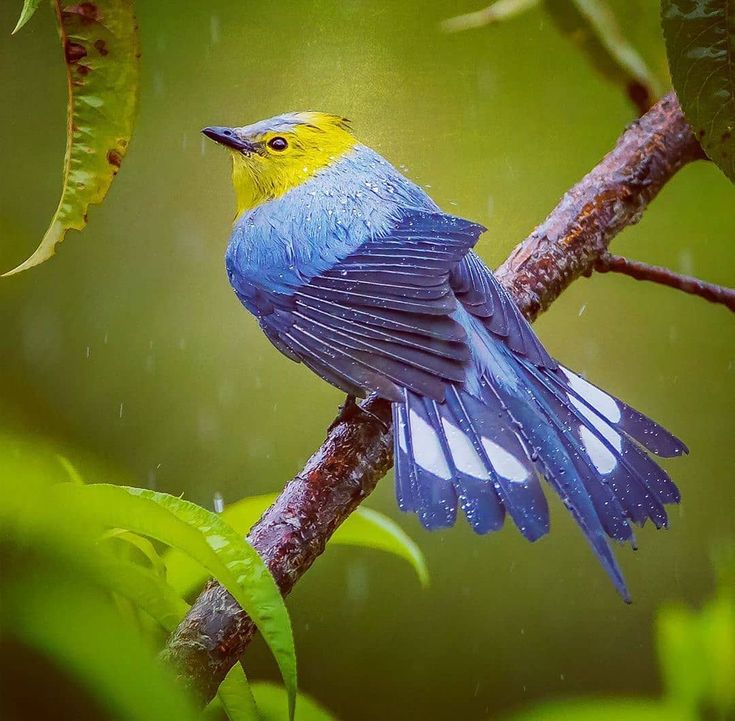This avian creature has a unique and eye-catching appearance, featuring a long and smooth tail, a noticeable tuft of feathers on its head, and a striking mixture of hues.

Introducing the delightful Ptiliogonys caudatus, also known as the long-tailed silky-flycatcher! This charming little bird measures at roughly 24 cm and features a soft grey forehead. Despite its size, it’s quite heavy, weighing around 37 grams, which is typical for a bird of its thrush-sized species. Its crested head, neck, throat, and lower belly are a gorgeous shade of yellow, while the back, lower breast, and upper belly are a cool blue-grey. The flight feathers and long, pointed tail are black, with white spots on the outer tail feathers.

In this species, the male bird is bigger in size than the female counterpart. The female’s length measures around 21 centimeters and she possesses a more subdued appearance when compared to the male. Her forehead is of a darker grey hue, and her body feathers are colored in olive. Additionally, her tail is comparatively shorter and less shiny and appears black in color.

Juvenile birds have a remarkable similarity with their mature counterparts, except for one distinctive characteristic – their tail feathers are shorter and the white spots on the outer tail are not as prominent.

These feathered friends are only found in the highlands of Costa Rica and western Panama. They call home anywhere from 1,850 meters up to the timberline.

The Long-tailed Silky-flycatcher enjoys spending time in mountain forests, as well as secondary forests and pastures that are surrounded by wooded ravines.

When these feathered creatures are not in the midst of reproduction, they tend to forage for sustenance in flocks. They take flight to catch insects or consume minuscule fruits such as mistletoe.

During the months of April to June, the Long-tailed Silky-flycatcher reproduces either independently or in small groups of up to five pairs. Utilizing lichen as their primary material, they construct a roomy, open cup-shaped domicile which is fortified with either caterpillar silk or spider webs. The nest is typically formed in the fork of a tree or atop a tall shrub or tree and is situated amidst dense foliage. Although both male and female birds engage in nest-building, the male bird is primarily responsible for providing food for the female during this period. After laying two eggs in the nest, the female remains there for 16 to 17 days incubating them while still receiving sustenance from her partner. Once hatched, both parents feed the baby birds until they are ready to vacate the nest after around 24 to 25 days.

Even though this feathered creature is commonly known, its numbers may be dwindling. The probable reason for this could be the destruction of its native surroundings caused by activities like deforestation, burning, and agriculture expansion.

